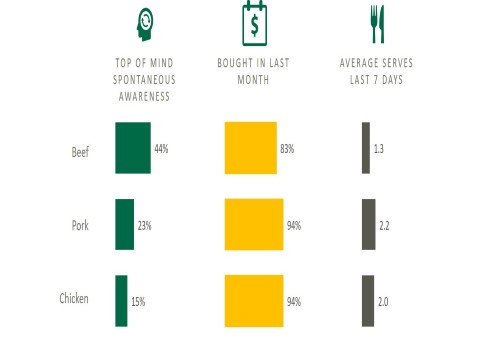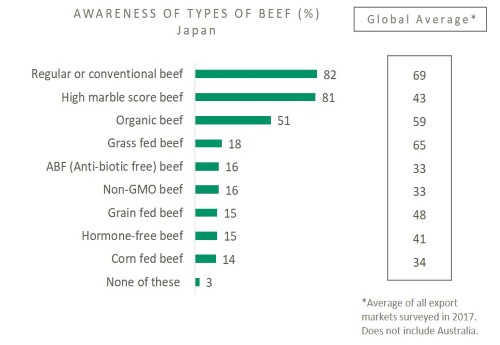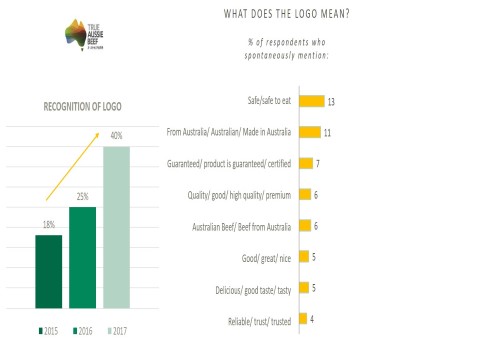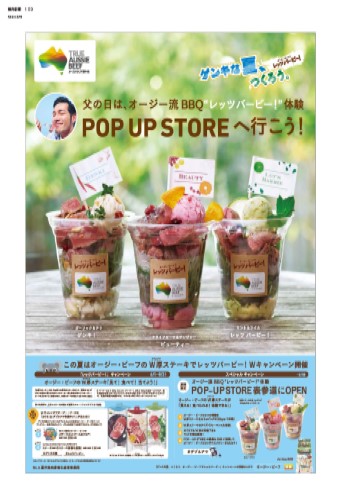Consumer perceptions of Australian beef in Japan
Key findings
- Beef is a popular meat in Japan, commanding a price premium over other proteins.
- Japan’s domestic beef industry is very strong, but there is a large and growing market for imported beef.
- Australia is well-positioned to take advantage of growing demand, as it is highly regarded by consumers on aspects that are important to them, including helping Japanese families feel ‘genki’ (meaning something similar to ‘healthy’ or ‘energetic’ in English).
Japanese consumers hold beef in high esteem
In MLA’s Global Consumer Tracker 2017, 82% of those interviewed rated beef as “the most superior meat[1]”. However, beef is considerably more expensive than the staples of chicken and pork, and consequently is seen as a more premium, less frequent meal option.

Marbled fat is seen as a marker of quality
A great source of national pride in Japan is Wagyu beef, selectively bred locally for more than 150 years, and now known and exported all over the world. Wagyu beef’s defining quality is the high level of intramuscular marbling, adding tenderness and flavour which is highly appreciated by Japanese beef consumers. Of the two types of domestic beef, Wagyu is viewed most highly, but its price makes it inaccessible for many, so Kokusan (non-Wagyu) beef is eaten more often.

Rather than thinking of different types of beef by their feed type (grainfed and grassfed), or production system, Japanese consumers generally classify beef in terms of origin – by country, and domestically by region and breed. Organic beef is well-known, but is seen by some as lacking tenderness.

Australian beef has carved out a clear position for itself in the market
Despite the strength of the local industry, Australian beef has built very high levels of awareness and consumption in the Japanese market. Ninety-eight percent of beef buyers have heard of Australian beef, 95% have eaten it before, and 52% have eaten it in the past month – higher than any other imported beef.
Australian beef is known for its consistent quality and impeccable safety record – a vital factor in a market still conscious of the bovine spongiform encephalopathy (BSE) crisis in the mid-2000s. At least some of this success can be attributed to the strength of the True Aussie Beef brand, launched in Japan in 2014 and growing in strength every year.

Australia’s main competitor is the USA, although New Zealand and Canadian beef have also seen increases in consumption year-on-year. Australian and American beef share a large amount of consumers, but those surveyed tend to see American beef as a cheaper commodity while Australian is more premium. However, American beef is positively regarded for providing a wide range of cuts to suit consumer needs.
The path forward: making Japanese families feel ‘genki’
In Japan, the biggest driver of growth in beef is being a “family favourite”. This is related to a number of factors, including quality and safety, but also availability, ease of preparation, and providing nutrition for the whole family.
This is best encapsulated in the Japanese term ‘genki’, meaning something close to ‘healthy’ or ‘energetic’ in English – it insinuates vitality. For a number of years, MLA has worked hard to ensure True Aussie Beef is seen as helping Japanese families feel ‘genki’, and is committed to the ongoing promotion of Australian beef in this valuable market.


[1] Fish and other seafood were not included in the list for selection. Other options included chicken, pork, lamb, goat and horsemeat.



